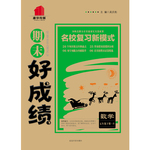题目内容
C
The Tasmanian devil is a rare marsupial(有袋动物)that lives only on the Australian island state of Tasmania. The doglike animal is rapidly disappearing. The Tasmanian state government estimates that the number of devils has dropped from around 150,000 in the mid-1990s to between 20,000 and 50,000 at the end of 2007.
The devil was declared an endangered species last week. It is being wiped out by a rare cancer called devil facial tumor(肿瘤)disease(DFTD). It spreads like a cold or flu from animal to animal. The disease is passed when one devil bites another. When the marsupial is infected with DFTD, large tumors develop around its mouth and neck. These growths make it impossible for the devil to eat. Many finally die from starvation within six months of being infected. As the name implies, the disease occurs only in Tasmanian devils and cannot be passed to humans.
You’ve got to remember that devils are scavengers(清扫工). They search through garbage for food. Throughout Tasmania people maintain outdoor dumps. If somebody threw out a carcass(兽类尸体), then the devils might actually consume quite large quantities of it.
The disease has not yet appeared in the devil population that lives in the northwest region of Tasmania. Conservationists have captured some of the healthy devils and sent them to a new home on the mainland of Australia. They hope these DFTD-free marsupials can be used to start a captive-breeding population. Once there are more disease-free devils, they can then repopulate the areas of Tasmania where the species are being wiped out.
Tasmanian devils play an important role in keeping the state’s ecosystem in balance. They keep the population of other predators, such as foxes and wild cats, in check. Ray Nias, head of World Wildlife Federation—Australia’s conservation program, says all Tasmanian wildlife will suffer if the devil becomes extinct. “If the devils go and the foxes and cats increase, it would be all over for a good dozen or more species of mammals, many of which are unique to Tasmania.”
46. It can be inferred that the Tasmanian devil is __________.
A. a hard-working street-cleaner B. a grass-eating animal
C. a meat-eating marsupial D. A DFTD origin
47. What’s the reason for making the Tasmanian devil endangered?
A. A rare disease called DFTD occurs in Tasmanian devils.
B. Dogs like to attack Tasmanian devils.
C. Tasmanian people try to wipe out Tasmanian devils.
D. The region of Tasmania is becoming hard for Tasmanian devils to breed.
48. To which question does the last paragraph give the answer?
A. How should people protect the devils?
B. What do the Tasmanian people do with the devils?
C. What happens if the devils disappear?
D. Which animal is closely related to the devils?
49. What measures do Tasmanian people take to stop the devils from being wiped out?
A. Trapping disease-free devils in a new place to breed more young devils.
B. Searching the cause of the disease and finding an effective treatment.
C. Developing new chemicals for the infected animals.
D. Moving all the devils to a new home on the mainland of Australia.
50. What’s true about DFTD?
A. It’s a disease that can be spread to human beings.
B. It’s a cold that occurs only in Tasmanian devils.
C. It’s a flu that Tasmanian devils get from their companions.
D. It’s a cancer that can be passed from one Tasmanian devil to another.
46-50 CACAD
【解析】略

 期末好成绩系列答案
期末好成绩系列答案 99加1领先期末特训卷系列答案
99加1领先期末特训卷系列答案 百强名校期末冲刺100分系列答案
百强名校期末冲刺100分系列答案 好成绩1加1期末冲刺100分系列答案
好成绩1加1期末冲刺100分系列答案 金状元绩优好卷系列答案
金状元绩优好卷系列答案
| |||||||||||||||||||||||||||||||||||||||||||||||||||||||||||||||||||||||||
Taking the dog to the beach on a hot summer's day is a great way to relax. But not all beaches are dog friendly. So if you're looking to take your dog to the coast this summer, here's a few of the country's most dog-friendly beaches.
| Sunshine Beach Where: Noosa, Queensland Only a 10-minute drive from Noosa, Sunshine Beach also welcomes dogs with open paws. Once known as Golden Beach, its long white beaches make it a paradise for anyone who loves fishing, boating, surfing or just relaxing on the beach with family and friends. Restrictions (限定): Dogs can freely explore the shoreline from Noosa National Park to the path leading from Seaview Terrace. |
| Tallow Beach Where: Byron Bay, New South Wales With white sand that stretches (延伸) for miles, and clean, clear waters washing its shores, Byron certainly doesn't want for beautiful beaches — and Tallow Beach is no exception. This seven-kilometer-long beach stretches all the way to Broken Head Reserve. Restrictions: The beach's dog-friendly area starts near Jarman Street and stretches north to the outside of Arakwal National Park. |
| Muirs Beach Where: Coles Bay, Tasmania One of the few beaches that falls outside of Freycinet National Park, Muirs, is a great family beach that welcomes dogs, too. Compared to famous sheltered beaches of Freycinet, it is more open to the waves from the Tasman Sea, making it ideal for windsurfing. The beach itself is very long, so there is plenty of space to let your dog run free. Restrictions: Dog owners must respect the environment and use the poop bags provided at the entrance to the beach to get rid of any dog waste.Fines apply (运用). |
| Yorkeys Knob Beach Where: Queensland Located just 15 minutes from Cairns, Yorkeys Knob Beach is a great spot to relax with your dog. Named after a local fisherman called "Yorkey" who lived on the rocky hill (“knob”), this wonderful little beach is one of the best-kept secrets in Tropical North Queensland. It is ideal for swimming and snorkelling in the summer season. Restrictions: The southern end of the beach is the "dog off-chain" end where your dog is allowed to run free; dogs must be on a chain in all other areas of the beach. |
| A.Tallow Beach is not popular in Byron Bay. |
| B.Beautiful beaches are not important in Byron Bay. |
| C.Tallow Beach is the most beautiful beach in Byron Bay. |
| D.Tallow Beach is one of the beautiful beaches in Byron Bay. |
| A.it’s just fine to let it be |
| B.they have to clean the beach |
| C.they’ll get punished by paying money |
| D.they have to provide poop bags at the entrance to the beach |
| A.All beaches welcome people together with their dogs. |
| B.Tallow Beach was named after a local fisherman. |
| C.Yorkeys Knob Beach is a good place for windsurfing. |
| D.Dogs can run free only on some of the beaches mentioned above. |
| 阅读理解 | ||||
| Taking the dog to the beach on a hot summer's day is a great way to relax. But not all beaches are dog friendly. So if you're looking to take your dog to the coast this summer, here's a few of the country's most dog-friendly beaches.
| ||||
| 1. What can we learn from the underlined sentence? | ||||
| A. Tallow Beach is not popular in Byron Bay. B. Beautiful beaches are not important in Byron Bay. C. Tallow Beach is the most beautiful beach in Byron Bay. D. Tallow Beach is one of the beautiful beaches in Byron Bay. | ||||
| 2. On Muirs Beach, if people do not get rid of dog waste, . | ||||
| A. it's just fine to let it be B. they have to clean the beach C. they'll get punished by paying money D. they have to provide poop bags at the entrance to the beach | ||||
| 3. Which of the following statements is TRUE? | ||||
| A. All beaches welcome people together with their dogs. B. Tallow Beach was named after a local fisherman. C. Yorkeys Knob Beach is a good place for windsurfing. D. Dogs can run free only on some of the beaches mentioned above. |
 amed after a local fisherman called "Yorkey" who lived on the rocky hill ("knob"), this wonderful little
amed after a local fisherman called "Yorkey" who lived on the rocky hill ("knob"), this wonderful little